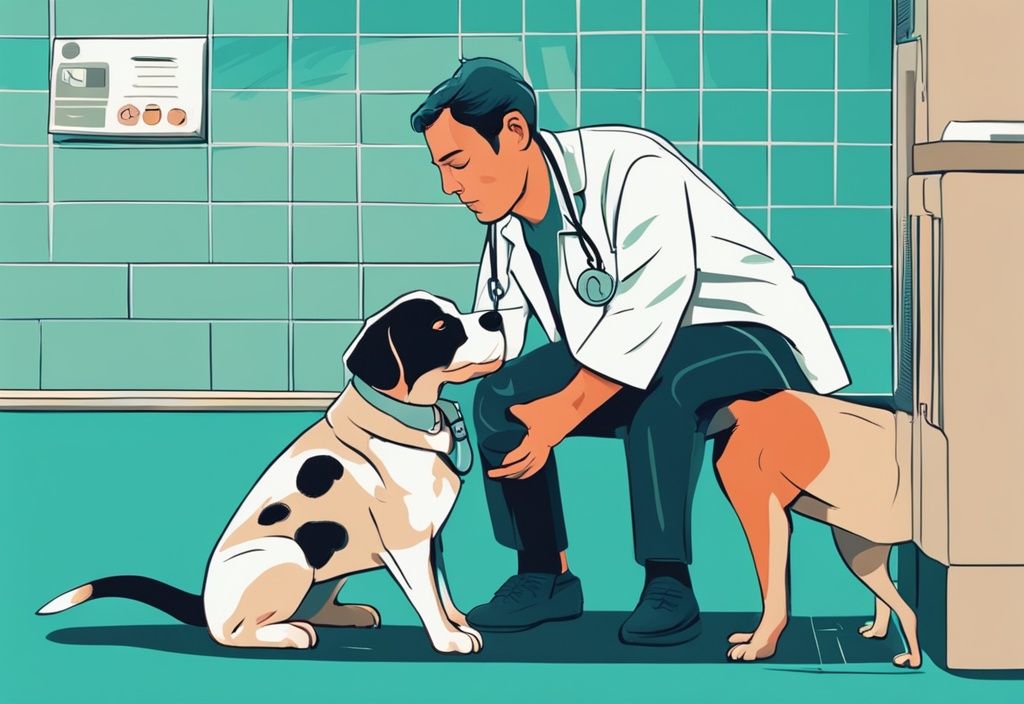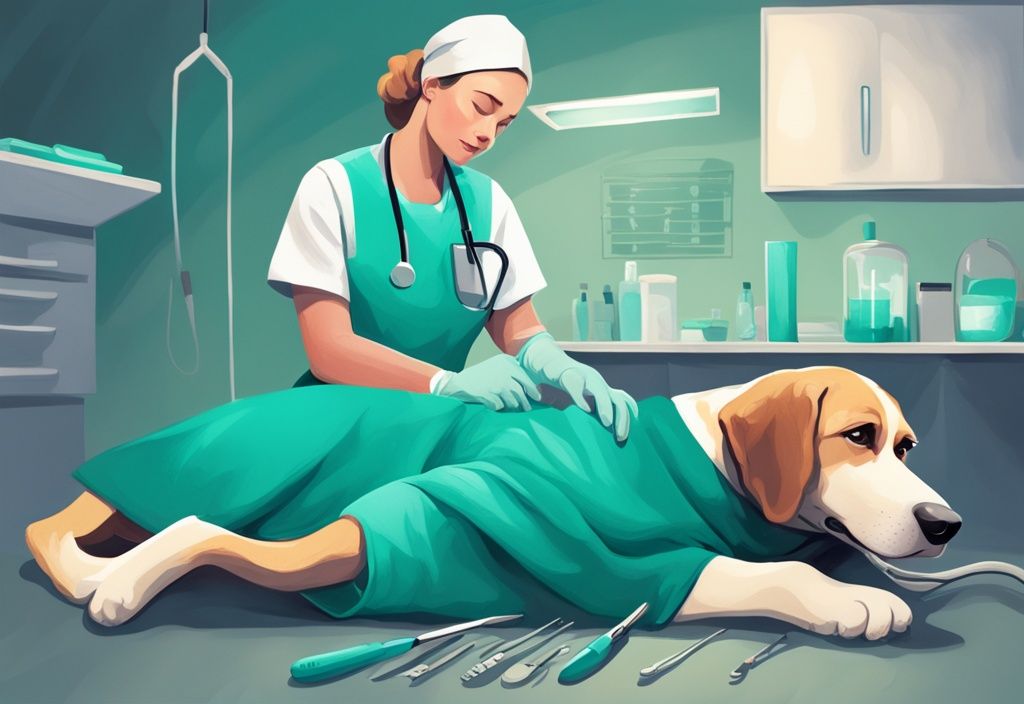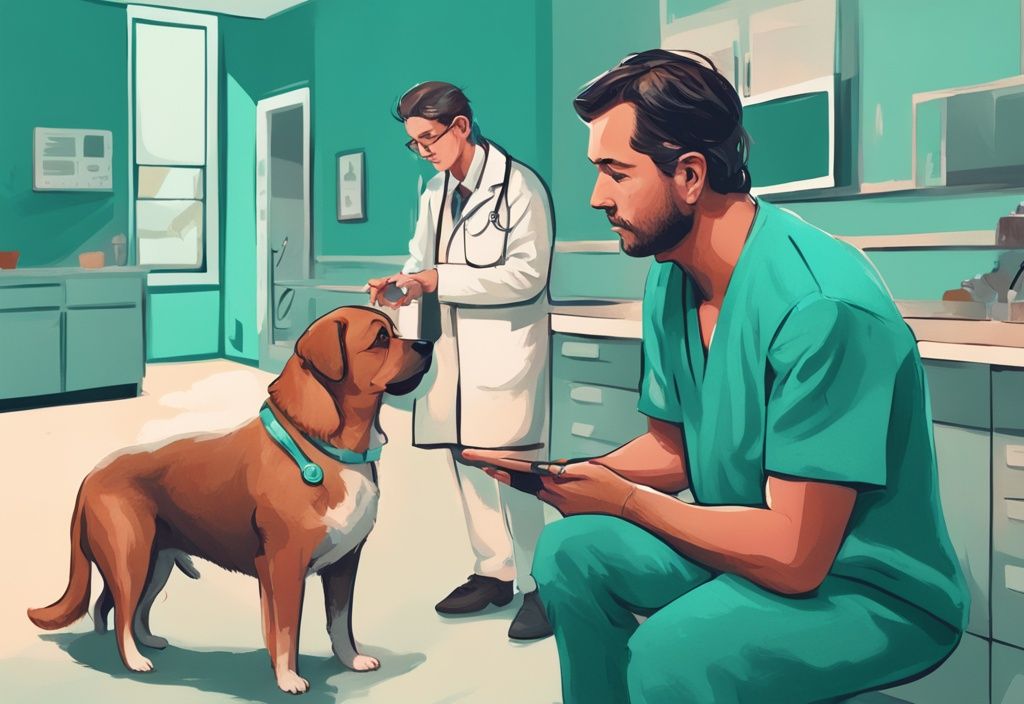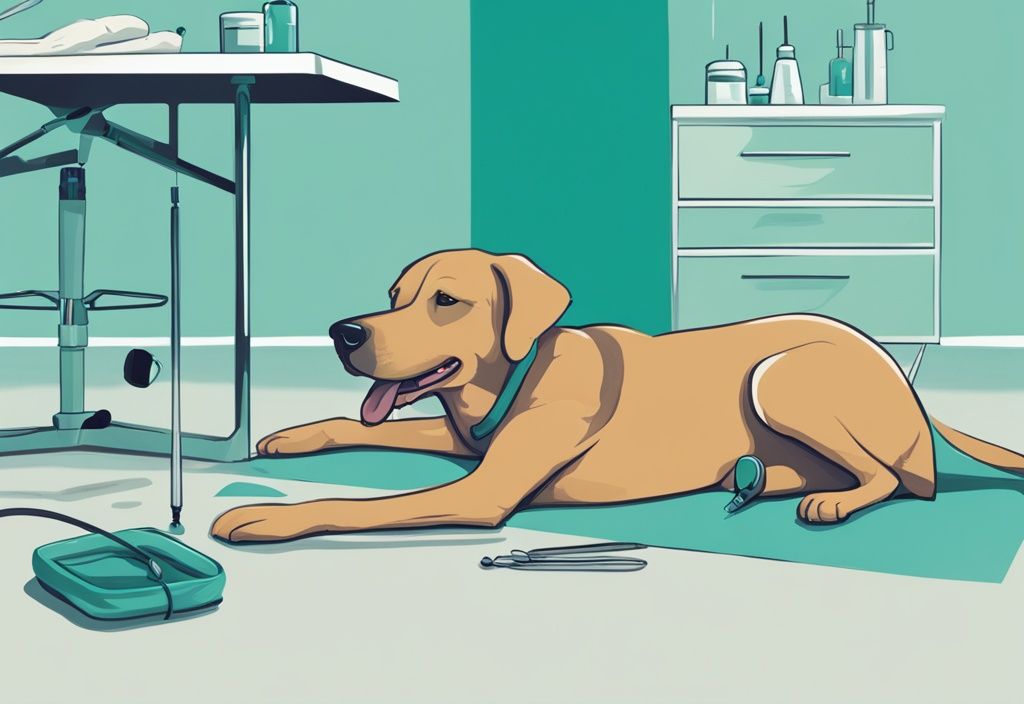Ever found yourself in a pickle, wondering if you can spay your dog while she’s in heat? Just like when Max, my Border Collie, was in her cycle, it can be a real head-scratcher! This situation, while common, brings unique challenges and risks due to increased blood flow and hormonal changes.
In this guide, we’ll delve into the nitty-gritty of these risks, the alternatives, and expert advice to help you make an informed decision. Whether you’re contemplating delaying the procedure or managing your dog through her heat cycle, I’ve got you covered.
So, buckle up, fellow dog lovers! Let’s navigate this tricky terrain together, ensuring our furry friends’ safety and well-being, one paw at a time.
Can You Spay a Dog in Heat?
Spaying a dog in heat is a topic that often sparks curiosity and debate among pet owners. It’s important to understand both the technical possibilities and the reasons why it might not always be the best choice. Let’s dive into the details, shall we?
Technical Possibility and Veterinary Perspectives
Spaying, or as the vets call it, ovariohysterectomy, is like the ultimate “no more puppies” card for your furry friend. It involves removing the ovaries and uterus of a female dog. Now, technically speaking, it’s possible to spay a dog while she’s in heat. But, oh boy, does it come with its own set of challenges! Imagine trying to bake a cake while the kitchen’s on fire—doable, but not ideal. Many veterinarians, including those at the Association of Shelter Veterinarians, say it’s safe if the surgeon is skilled. Historically, it was a bit of a hot potato topic, but it’s gaining more acceptance now. If you’ve ever wondered, “why does my cat follow me everywhere,” you might find it comforting to know that this behavior is often linked to their natural curiosity and social nature.
Learn more about this feline behavior here.
Why Spaying in Heat is Not Generally Recommended
Here’s the kicker: Spaying during a heat cycle is like trying to change a tire on a moving car. It’s not generally recommended because of the increased complications. During heat, blood flow to the reproductive organs is like a river in full flood, which can lead to significant blood loss. Plus, the hormone surge during this time is like adding fuel to the fire, increasing the likelihood of bleeding. To keep things smooth and simple, it’s best to spay your dog right before or after her first heat cycle. This timing helps ensure a smoother surgical experience, much like planning a picnic on a sunny day instead of during a thunderstorm.
So, while it might be technically possible to spay a dog in heat, weighing the risks and timing can make all the difference in ensuring your furry friend’s health and happiness. After all, isn’t that what we’re all striving for with our beloved pets?
Risks and Complications of Spaying a Dog in Heat
So, you’re wondering, “Can you spay a dog in heat?” Well, let’s dive into the nitty-gritty of it all. Spaying during this time is a bit like trying to bake a cake while your kitchen is being remodeled—possible, but definitely more challenging! Here’s what you need to know about the risks and complications involved.
Increased Blood Flow and Surgical Challenges
First off, imagine your dog’s reproductive organs as a bustling city during rush hour. When she’s in heat, there’s a lot more “traffic” in the form of blood flow. This can make surgery trickier than usual. Think of it like trying to paint a moving car—it’s doable, but it takes a steady hand and a lot of focus. The increased blood supply to the uterus can make things a bit dicey, especially for less experienced surgeons. And let’s not forget, during heat, your dog’s blood is a bit like a slow-setting jelly, not coagulating as efficiently, which can complicate things further.

Potential for Longer Surgery and Recovery Time
Now, let’s talk about time. Spaying a dog in heat can be a bit of a marathon rather than a sprint. The tissues are more delicate and prone to bleeding, which means the surgery might take longer. It’s like trying to sew a dress with slippery fabric—more suture materials might be needed, and your pup will be under anesthesia for a longer period. This can naturally extend the recovery time, too. So, be prepared for your furry friend to take it easy for a while, just like Max does after a long day of chasing squirrels.
Post-Operative Complications
After the surgery, it’s all about TLC—tender loving care. Your pup will need to rest up for about 10 to 14 days, steering clear of any antics that might disturb the stitches. Spaying a dog in heat can increase the risk of post-operative hiccups like infection and bleeding. You might need to break out the trusty Elizabethan cone to keep her from licking the surgical site. Keep an eye on her recovery, ensuring she follows all the post-op care instructions. It’s a bit like being a detective, making sure everything’s going smoothly, and before you know it, she’ll be back to her playful self, just like Whiskers after a nap.
Alternatives to Spaying a Dog in Heat
Sometimes, the timing just isn’t right, and spaying your dog while she’s in heat might not be the best option. But don’t worry, there are other ways to manage this situation effectively. Let’s explore a few alternatives that can keep your furry friend safe and sound without rushing into surgery.
Delaying the Procedure
Delaying the spaying procedure until your dog is no longer in heat is a common and often recommended alternative. This approach requires careful management to prevent unwanted pregnancies during the heat cycle. Most veterinarians suggest spaying dogs before their first heat cycle or waiting at least two to three months after the heat cycle ends. This timing helps reduce surgical risks and ensures a smoother recovery process. By choosing to delay, you allow your dog’s reproductive system to return to a more stable state, minimizing potential complications associated with increased blood flow during heat.
Managing a Dog in Heat Safely
Managing a dog in heat involves taking proactive steps to ensure her safety and prevent accidental breeding. Keeping your dog away from male dogs is crucial, as her scent can attract them from a distance. Consider using protective clothing, such as dog diapers, to manage any discharge and prevent mating. Providing a calm and secure environment helps reduce stress and keeps your dog comfortable during this time. Vigilance is key, as even a brief lapse in supervision can lead to unintended consequences. By maintaining a watchful eye, you can effectively manage your dog’s heat cycle without resorting to immediate spaying.
Hormonal Treatments
Hormonal treatments can be an option to delay your dog’s heat cycle until it is safer to proceed with spaying. These treatments should only be administered under the guidance of a veterinarian due to potential side effects and health considerations. Hormonal interventions can help manage the timing of your dog’s reproductive cycle, providing a temporary solution while you plan for a more suitable time to spay. However, it is essential to weigh the benefits against the risks, as hormonal treatments can have long-term implications on your dog’s health. Consulting with your veterinarian will ensure that you make an informed decision tailored to your dog’s specific needs.
Consulting with Your Veterinarian
When it comes to making decisions about your furry friend’s health, consulting with a veterinarian is a must. This section dives into the ins and outs of evaluating your dog’s health and determining the best time to spay, especially if you’re wondering, can you spay a dog in heat.

Evaluating Your Dog’s Health and Risks
So, you’re pondering the big question: can you spay a dog in heat? It’s a bit like deciding whether to bake a cake during a power outage—possible, but with some extra challenges! That’s where your trusty veterinarian comes in. They’ll give your pup a thorough check-up, looking at her health like a detective on a mission. This isn’t just any old vet visit; it’s about understanding the unique quirks and needs of your dog, just like how my Border Collie, Max, has a knack for finding the squeakiest toy in the house.
Your vet will chat with you about potential risks and benefits, weighing them up like a game of tug-of-war. They’ll consider everything from your dog’s current health status to any pre-existing conditions, ensuring that the decision you make is as sound as Max’s bark when he spots a squirrel. This kind of in-depth evaluation is key to making a choice that’s in the best interest of your four-legged friend.
Determining the Best Time to Spay
Timing is everything, isn’t it? Just like knowing when to give Whiskers her favorite treat (hint: always), figuring out the best time to spay your dog is crucial. Most vets suggest doing it before the first heat cycle, around 4-6 months old, for a smoother ride through surgery and recovery. But, as with all things in life, it depends. Your vet will tailor their advice to your dog’s age, breed, and health, much like how I tailor Max’s walks to his endless energy levels.
Think of this guidance as a personalized roadmap for your pup’s health journey. It’s about minimizing risks and setting the stage for a healthy recovery. By having an open chat with your vet, you can make well-informed decisions that keep your canine companion wagging her tail happily. After all, isn’t that what it’s all about—ensuring our furry pals live their best lives?
Pre-Surgery and Post-Surgery Care
When it comes to the question, “can you spay a dog in heat,” understanding the right care before and after surgery is key. This section will guide you through the essential steps to ensure your furry friend is well-prepared for the procedure and enjoys a smooth recovery.
Preparing Your Dog for Surgery
Ah, the age-old question: “can you spay a dog in heat?” If you’re pondering this, you’re not alone! Preparing your pup for surgery is like prepping for a big adventure. It’s all about setting the stage for success. For starters, your vet might suggest fasting your dog for a bit before the big day. Think of it as a mini detox to keep things safe and sound during anesthesia. Max, my Border Collie, always gives me those puppy eyes when it’s fasting time, but it’s all for a good cause!
And let’s not forget about playtime. While it’s tempting to let your dog run wild, keeping things low-key before surgery is a smart move. No one wants a sprained paw before the curtain rises on the main event, right? So, maybe swap that game of fetch for a cozy cuddle session. Following your vet’s advice is like following a treasure map—every step gets you closer to a smooth operation.

Post-Surgery Recovery and Care
Now, onto the recovery phase—a time when your dog deserves all the TLC in the world. After surgery, keeping an eye on the incision site is like being a detective on a mission. Any signs of trouble, and it’s time to call in the experts (a.k.a., your vet). And while your dog might not be a fan of pain meds, they are the unsung heroes of recovery, ensuring comfort and healing.
Remember, post-surgery isn’t the time for your dog to channel their inner athlete. Limiting physical activity is crucial—think of it as a spa retreat for your pup. Max always gives me that “but why?” look, but a little rest goes a long way. With these steps, and a sprinkle of patience, you’ll have your furry friend back to their playful self in no time. And hey, isn’t that what we all want?
FAQ
Ever wondered if you can spay a dog in heat? It’s a question many pet parents ask, and it’s important to know the ins and outs. Let’s dive into some common queries and shed light on this topic, with a sprinkle of fun and a dash of expertise.
Will spaying a dog in heat affect her behavior?
Spaying a dog in heat doesn’t magically transform her personality. Think of it like Max, my Border Collie, who stays his lovable self whether he’s chasing a ball or lounging in the sun. Behavior changes are more about the love, care, and attention you give—like a balanced diet, regular exercise, and lots of cuddles!
How long does it take for a dog to recover from spaying?
Recovery from spaying is usually a cozy 10 to 14-day affair. During this time, it’s all about rest and relaxation. Picture your pup as a little queen on her throne, avoiding any rough-and-tumble activities that might mess with her stitches. It’s the perfect excuse for extra snuggles and a Netflix marathon!
Can spaying a dog in heat lead to weight gain?
Spaying a dog in heat won’t directly lead to weight gain. It’s more about the lifestyle choices you make together. Just like how Whiskers, my rescue cat, stays fit with her playful antics and a healthy diet, your dog’s weight will depend on her diet and exercise routine. Keep her active and happy, and she’ll stay in tip-top shape!
What is the cost difference for spaying a dog in heat?
Spaying a dog in heat can come with a slightly higher price tag. Why? Well, it’s a bit more complex and requires extra time and materials. The cost can vary depending on where you live, and the size and age of your furry friend. But remember, investing in your pet’s health is always worth it!
